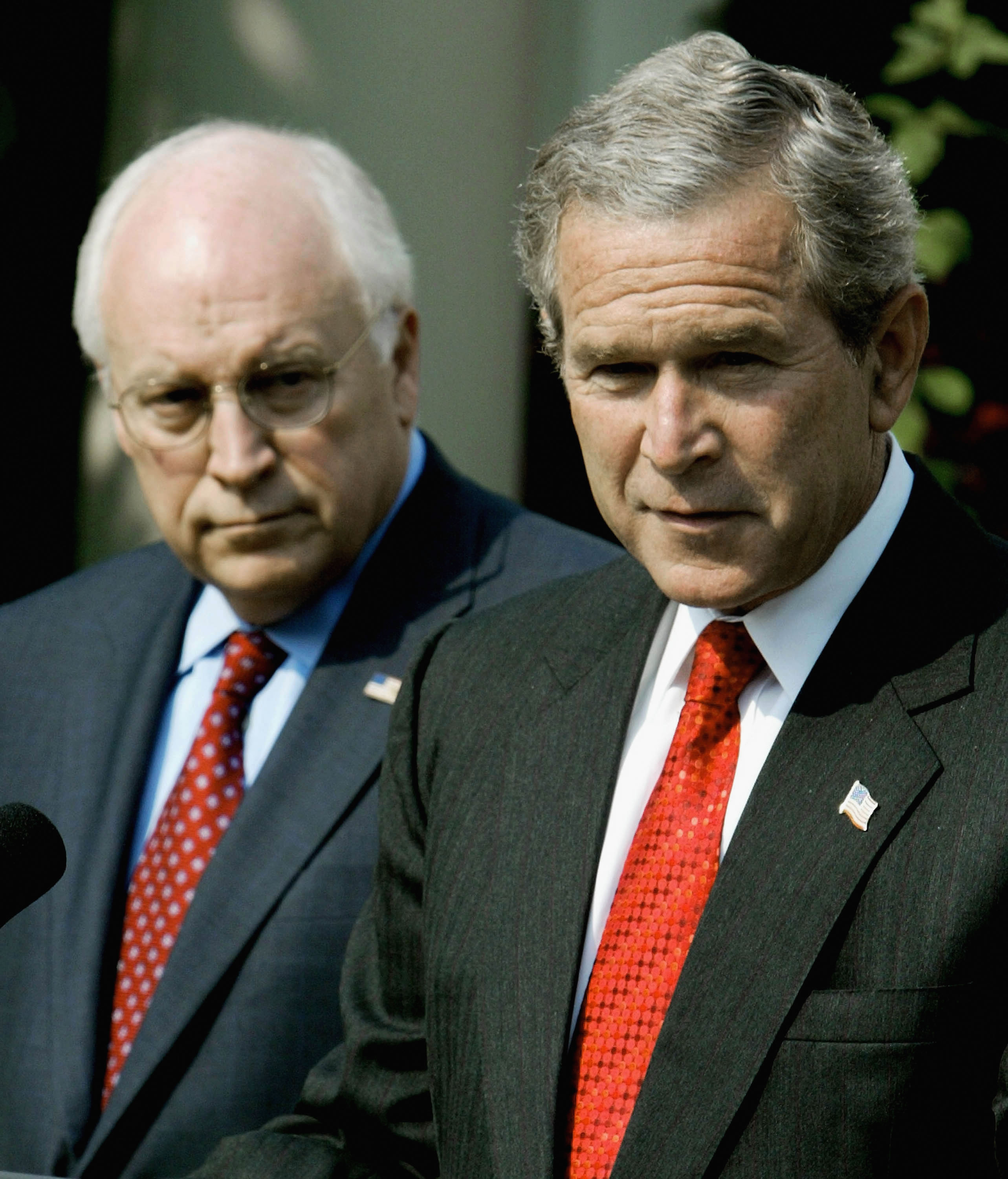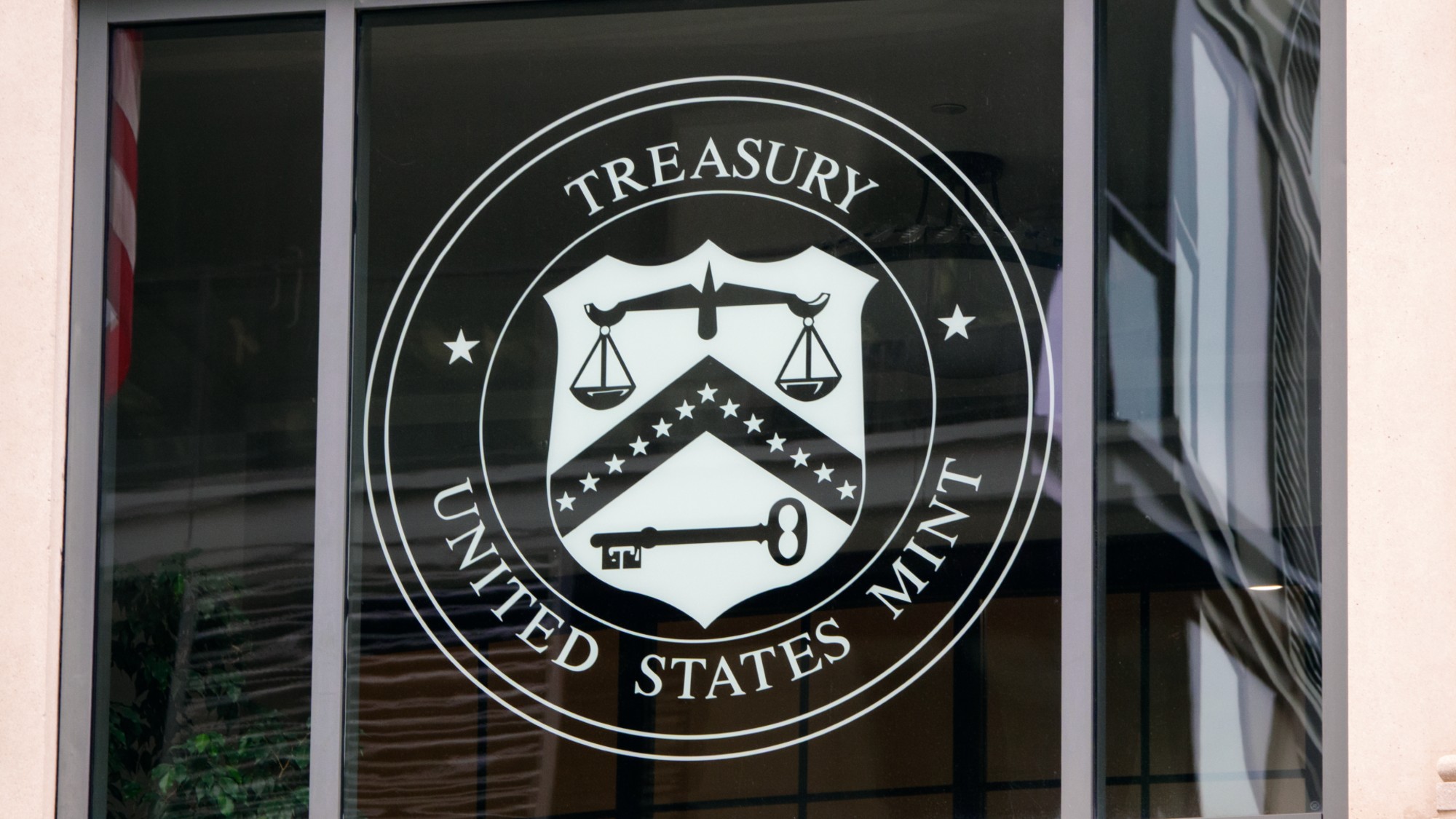How George W. Bush and Dick Cheney brought torture to America
A review of Frontline's Secrets, Politics, and Torture


Tonight, Frontline will air a documentary called Secrets, Politics, and Torture, directed by Michael Kirk, about how President George W. Bush and Vice President Dick Cheney institutionalized torture in American politics and government.
Three major developments explored in detail by Kirk drive home the extent to which Bush and Cheney worked to ingrain torture in the American state.
The first was the crushing ideological pressure to torture that came from the top of the Bush administration. The most striking example of this came directly after 9/11, when al Qaeda operative Abu Zubaydah was captured. Since the CIA had zero personnel with experience in interrogation, the FBI was initially brought in. Ali Soufan, a highly experienced interrogator and Muslim who speaks fluent Arabic, took charge of the questioning. He deployed the traditional police model, which focuses on building rapport and a criminal case. Almost immediately, Zubaydah gave up Khalid Sheik Mohammad as a member of al Qaeda.
The Week
Escape your echo chamber. Get the facts behind the news, plus analysis from multiple perspectives.

Sign up for The Week's Free Newsletters
From our morning news briefing to a weekly Good News Newsletter, get the best of The Week delivered directly to your inbox.
From our morning news briefing to a weekly Good News Newsletter, get the best of The Week delivered directly to your inbox.
Despite that quick success, word came down from Washington: Use violence. A man named James Mitchell convinced the Bush brass that he had a better way. The CIA eventually paid his company — co-founded with another psychologist, Bruce Jessen — $81 million. The two had been psychologists in the Air Force, where they oversaw the mock interrogators in the SERE program, which trained Navy SEALs what to do in case they were captured or tortured by the enemy.
Mitchell did not speak Arabic. He had no experience whatsoever in Islamic extremism generally or al Qaeda in particular. And he had never even interrogated anyone. That is who replaced Soufan, who was without question one of the finest al Qaeda specialists in the entire country at the time. That is the level of competence the Bush administration was willing to flush down the toilet to validate its iron belief that non-violent interrogations (soft, weak, liberal) could never work, despite Soufan's proven success. They would have put an ice cream truck driver in charge of interrogations, so long as he had some crackpot scheme about freezing detainees half to death in soft serve.
It took a terrific fight with much of the professional bureaucracy — Soufan at one point considered arresting the CIA agents torturing Zubaydah — but torture eventually prevailed.
The second development occurred when the torture bill came due. The Abu Ghraib torture scandal was a colossal stain on Bush's legacy, and by late 2005 much of the administration had turned against the CIA program. Then-Secretary of State Condoleezza Rice led a push inside the administration to announce an official stop to the program. At a high-level meeting in the White House, everyone but Cheney agreed with Rice, and she seemed to have won. A speech was arranged.
A free daily email with the biggest news stories of the day – and the best features from TheWeek.com
But as happened so often in the Bush administration, Cheney went to Bush personally afterward, and convinced him that Rice was wrong. Rice went to the speech expecting Bush to disavow "enhanced interrogation," but instead he embraced it, and claimed it had produced valuable intelligence (it hadn't).
This is "one more example of the long shadow Cheney casts over the American government," Kirk said in an interview with The Week.
This was probably the key moment when the torture disease could have been expunged from the American government, but was instead left to take over the host. Once Bush, the leader of the Republican Party, embraced torture as affirmatively good policy, the rest of the conservative ideological apparatus swung into place behind him, and torture became a partisan matter. Instead of Jose Rodriguez (who destroyed the tapes of the CIA interrogations) being a criminal conspirator, he became a loyal conservative.
So when Barack Obama came to power, attempting to uphold previous norms would have required an unprecedented legal fight against practically the entire top echelon of the previous administration. It's understandable, though still inexcusable, that Obama has been utterly mealy-mouthed about torture, and that he declined to prosecute any torturers or their enablers. Trying to do so would have paralyzed his entire agenda.
Finally, unrepentant and unpunished CIA torturers, defensively looking to clear their names and reputations, inserted pro-torture agitprop into the Hollywood blockbuster Zero Dark Thirty. Acting on extensive CIA interviews, director Katherine Bigelow conveyed the strong impression that torture is what led to the killing of Osama bin Laden:

As a result, it's very likely America will torture again.
As with so many Frontline productions, Secrets, Politics, and Torture does not contain that much new information, but is instead a judicious and well-crafted summary of a long and complex story. When it comes to the CIA torture program, and the Senate report documenting it, this is as good a single source as you'll find.
Ryan Cooper is a national correspondent at TheWeek.com. His work has appeared in the Washington Monthly, The New Republic, and the Washington Post.
-
 The Mint’s 250th anniversary coins face a whitewashing controversy
The Mint’s 250th anniversary coins face a whitewashing controversyThe Explainer The designs omitted several notable moments for civil rights and women’s rights
-
 ‘If regulators nix the rail merger, supply chain inefficiency will persist’
‘If regulators nix the rail merger, supply chain inefficiency will persist’Instant Opinion Opinion, comment and editorials of the day
-
 Trump HHS slashes advised child vaccinations
Trump HHS slashes advised child vaccinationsSpeed Read In a widely condemned move, the CDC will now recommend that children get vaccinated against 11 communicable diseases, not 17
-
 Bari Weiss’ ‘60 Minutes’ scandal is about more than one report
Bari Weiss’ ‘60 Minutes’ scandal is about more than one reportIN THE SPOTLIGHT By blocking an approved segment on a controversial prison holding US deportees in El Salvador, the editor-in-chief of CBS News has become the main story
-
 Has Zohran Mamdani shown the Democrats how to win again?
Has Zohran Mamdani shown the Democrats how to win again?Today’s Big Question New York City mayoral election touted as victory for left-wing populists but moderate centrist wins elsewhere present more complex path for Democratic Party
-
 Millions turn out for anti-Trump ‘No Kings’ rallies
Millions turn out for anti-Trump ‘No Kings’ ralliesSpeed Read An estimated 7 million people participated, 2 million more than at the first ‘No Kings’ protest in June
-
 Ghislaine Maxwell: angling for a Trump pardon
Ghislaine Maxwell: angling for a Trump pardonTalking Point Convicted sex trafficker's testimony could shed new light on president's links to Jeffrey Epstein
-
 The last words and final moments of 40 presidents
The last words and final moments of 40 presidentsThe Explainer Some are eloquent quotes worthy of the holders of the highest office in the nation, and others... aren't
-
 The JFK files: the truth at last?
The JFK files: the truth at last?In The Spotlight More than 64,000 previously classified documents relating the 1963 assassination of John F. Kennedy have been released by the Trump administration
-
 'Seriously, not literally': how should the world take Donald Trump?
'Seriously, not literally': how should the world take Donald Trump?Today's big question White House rhetoric and reality look likely to become increasingly blurred
-
 Will Trump's 'madman' strategy pay off?
Will Trump's 'madman' strategy pay off?Today's Big Question Incoming US president likes to seem unpredictable but, this time round, world leaders could be wise to his playbook
